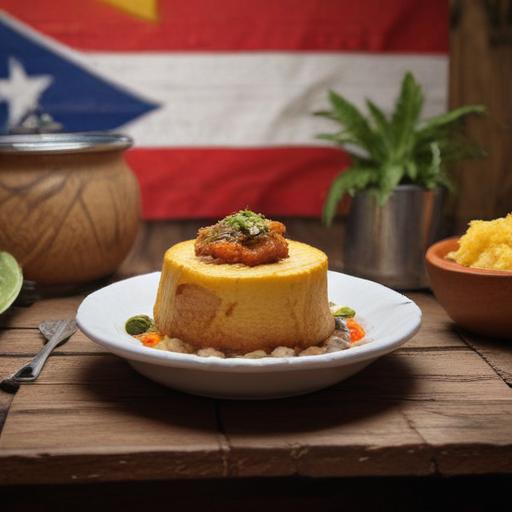Puerto Rico’s culinary scene is a vibrant reflection of the island’s intricate history, merging Spanish, African, and Indigenous influences. From hearty staples like plantains and yuca to the beloved condiment sofrito, Puerto Rican cuisine offers a rich tapestry of flavors. In the historic capital of San Juan, fine dining establishments elevate traditional dishes such as tostones and sorrullos, while casual coastal kiosks serve up tasty arepas and alcapurrias.
A prominent dish, mofongo, embodies Puerto Rico’s diverse heritage. At El Patio de Sam, visitors learn to prepare this savory delight, which combines fried green plantains with marinated chicken and garlic sauce. Guided by local experts, diners engage in the process using traditional tools, reflecting the Taíno culture that predated Spanish colonization. The roots of mofongo stem from African culinary traditions, designed to nourish enslaved people who faced harsh living conditions through hearty meals.
Puerto Rico’s food culture has continually evolved, with celebrations of traditional dishes taking place during holidays and special occasions. Celebrity chefs and family-run farms are at the forefront of this culinary renaissance. For instance, Frutos Del Guacabo, a small farm in Manatí, showcases unique produce like the lemon drop flower, which plays a delightful role in sorbets for local restaurants. After Hurricane Maria, the farm became a cooperative, emphasizing food production independence, as the island imports the majority of its food supply.
Another compelling story unfolds at Hacienda Tres Ángeles, a coffee farm in Adjuntas. Owned by a couple who transitioned from city life, the farm has rebounded from the devastation of Hurricane Maria, with volunteers supporting its survival through global orders. Currently, the farm maximizes sustainable practices, producing high-quality coffee while fostering an appreciation for agriculture.
Further, El Burén de Lula, a local eatery renowned for its classic fried snacks, runs a bustling Sunday kitchen filled with traditional Puerto Rican dishes prepared with love and family history. And modern dining experiences like Vianda and La Faena creatively reinterpret local flavors, making the most of seasonal ingredients.
Puerto Rico’s culinary revival illustrates resilience and community spirit, reminding us that food is a unifying force. As the island continues to celebrate its heritage through cuisine, it offers visitors a taste of its rich history and vibrant culture, making every meal an opportunity to connect with the past while savoring the immense potential of the future.
